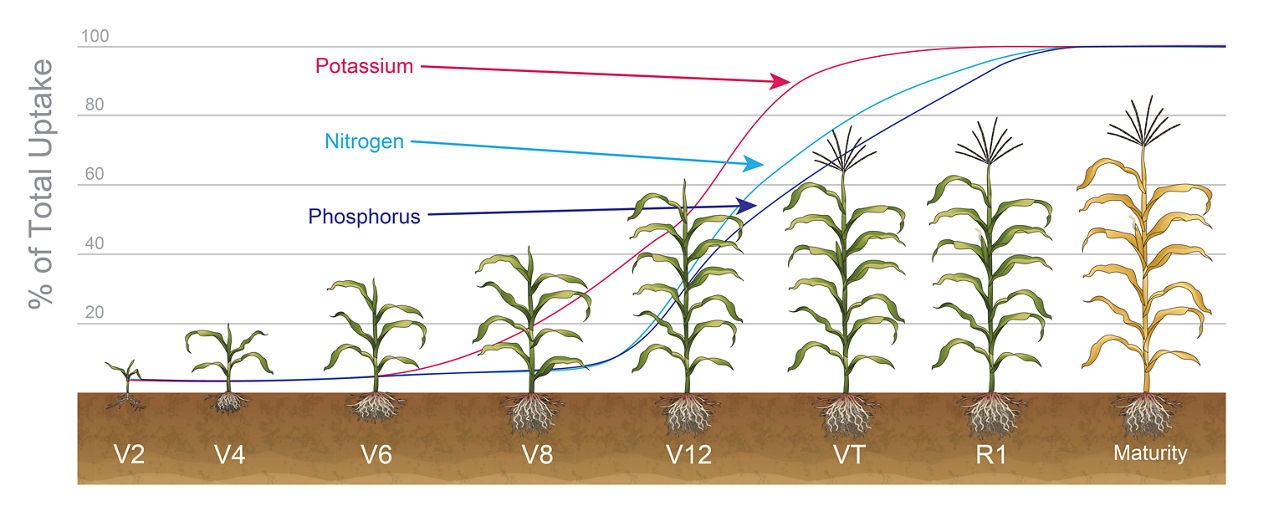Nitrous Oxide Emissions: What, Why, and How?
November 21, 2023
The infamous greenhouse gases make news regularly and are a major topic of government policy. Often, agriculture practices are a focus and scrutinized for greenhouse emissions. Most of the greenhouse gas emission associated with cropland and soil management is the soil emission of nitrous oxide (N2O). Emissions include direct soil to atmosphere, leaching, runoff, and volatilization. Soil aeration is the main factor that determines N2O emission, and this article outlines farming practices that help reduce N2O emissions. Generally, proper nitrogen (N) placement, avoiding excessive N applications, in season and variable rate N applications, and cover crop usage have been shown to reduce N2O soil emissions.
The physical placement of fertilizer can affect N2O emissions depending on fertilizer type, soil, and climate. Injection of anhydrous ammonia at shallower compared with deeper depths was found to reduce N2O emissions for clay soils and increase emissions for sandy soil with no effect on emission for a silt loam. The greater emission for clay soil, especially if poorly drained, with deeper placement may be due to increased denitrification. The emission of N2O in sandy and well-drained soils may be most associated with nitrification which may occur earlier with shallow compared with deep placement. The effect of fertilizer placement depth on N2O emissions can also be affected by N fertilizer type, the actual application depth, climate and weather conditions, drainage class, and soil organic carbon content.
The overall yield potential response to applied N rates, increases with net returns to N fertilizer but has the potential for decreased profit and yield potential at excessively high N rates. The profit gains with additional increments of N fertilizer applied decreases and reaches zero as an economically optimal N rate is reached. Available information indicates that, on average, greater than 30% of the fields have an excessively high N application rate. However, the economically optimal N rate varies unpredictably by year and market prices.
Application of much of the in-season N at a time of rapid crop N uptake means that the economic N rate for that crop can be better estimated and that much of the applied N will be taken up within a short time by the crop and soil microbes (Figure 1). From V12 to VT growth stages about 40% of N uptake occurs. The remaining N has a relatively short time as inorganic N in the soil giving little opportunity for N2O emission. Research from many studies, supports the yield benefits of split in-season N applications. One such study is a Bayer Learning Center Study at Gothenburg, Nebraska: Corn Characteristic Response to Nitrogen. On average, the difference in spring and fall N applications do not affect N2O emissions.

Research results for cover crop effects on N2O emissions indicated that cover crops tended to decrease N2O emissions overall due to uptake of residual N and storage in cover crop biomass. Some of the benefit may be lost when additional fertilizer-N is needed. Cover crop type and biomass management is important to annual N2O emission. With an increase with leguminous cover crops and with the incorporation of cover crop biomass, emission of N2O was unaffected when the cover crop biomass was removed. Termination timing also did not affect the N2O emission rate.
Other practices that may decrease N2O emissions include rotation of corn with legumes and other crops that require less N, avoiding over irrigation and irrigation type (Much more N2O emission is expected with furrow irrigation than with drip or sprinkler irrigation due to the large amounts of water applied per event with furrow irrigation), and solid and compost manure applications.
In conclusion, the direct soil emission of N2O associated with crop production is a major concern. The amount of N2O emitted is closely associated with the N fertilizer rate and with residual soil N. Soil aeration is a major determinant of N2O emission; however, there are farming practices that can benefit not only our environment, but overall crop yield potential as well.
Channel Agronomist
Kristin Schiff
Source:
Maharjan, B., Jin, V., Puntel, L., Iqbal, J., Williams, T., Blanco, H., and Wortmann, C.S. 2020. Crop management to reduce soil nitrous oxide emissions in Nebraska. G2322. NebGuide. University of Nebraska, Lincoln.
1110_307454